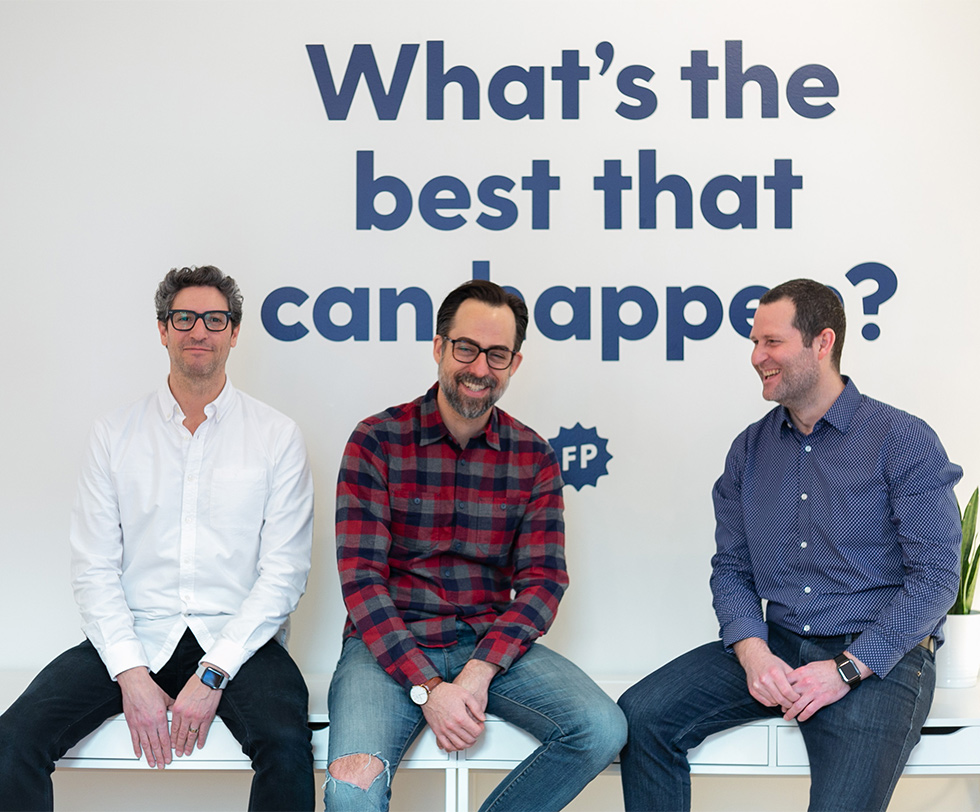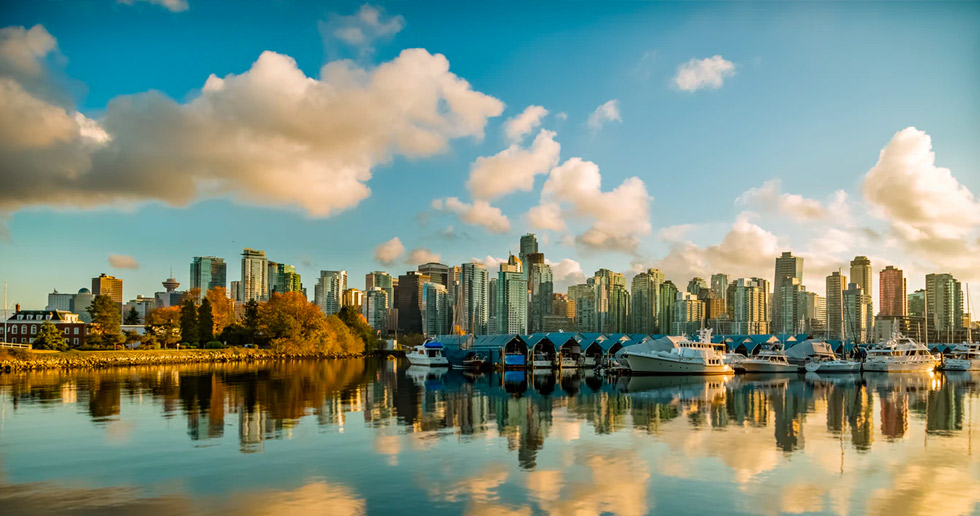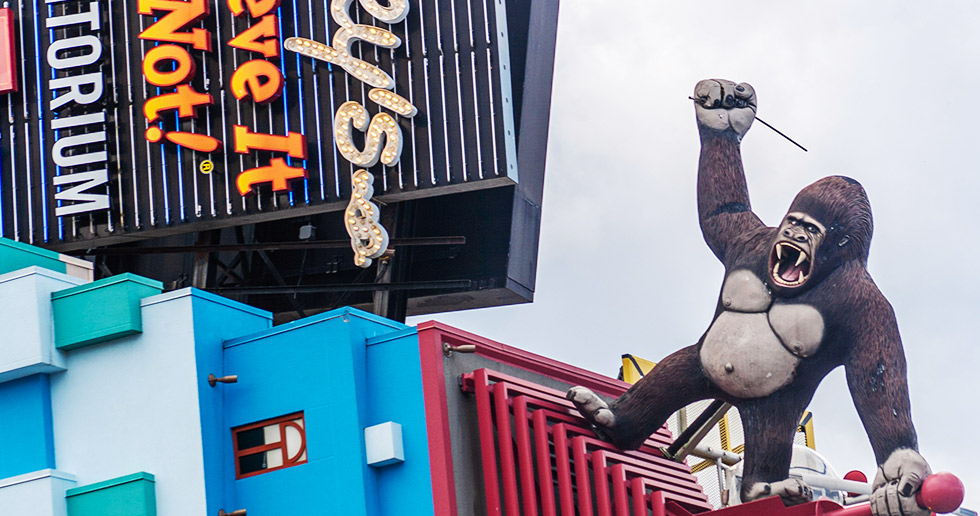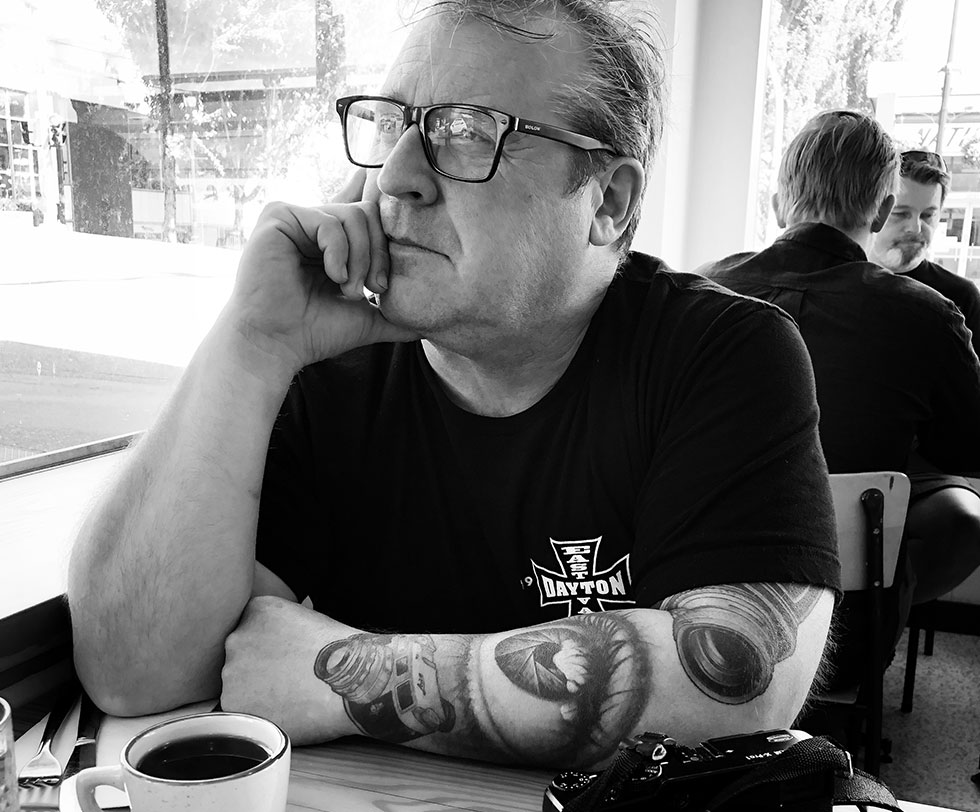
Dale Roth: 25 Years of Commercial Photography
Dale Roth has done over 5,000 shoots. He has spent the last 27 years as one of Western Canada’s go-to advertising photographers. Dale and his business partner at Roth and Ramberg have won a ton of awards for good reason – they’re good. Like, really good.
Did you go to school for photography?
Yeah! I went to NAIT in Edmonton, Northern Alberta Institute of Technology.
Is that where you and Michelle were in?
Yeah! We met in school. It’s a two-year program. Very technical compared to ACAD in Calgary, which was very art focused.
Is that a better type of school to go to for a young photographer?
I think in the time—back in the day, it was. We learned film and all the darkroom procedures so it was to get a job. Those skills that an art photographer may not have.

You could line up more work because you knew how to do it rather than what it meant?
Correct. I think the best way to learn photography after you get out of school is to assist somebody. So it was easier to get a job as an assistant because you had those skills.
What did you do right out of school?
I took a year off and then I moved back to Edmonton and worked for these two commercial photographers that I worked for free, for a while until they hired me. Don Hammond and Doran Clark. There were big shooters there and I’m like, “Hey, I’ll come work for free.” Because I need to get some experience and then I just never went away.
So how long should a photographer straight out of school assist for?
I was probably there too long. I was probably there six years, but two or three would probably do it.

And then you’re good and well rounded enough to go start booking jobs?
I think so. I mean, it worked for me. Some people can go right out of school right into photography. But the business part you learn there, which is a big part of commercial photography. So you learn how to quote. You learn how to handle clients. You learn deadlines. You learn all that stuff that school really didn’t teach you.
All the real world stuff.
Yeah.
What weren’t you good at? Which parts were the steepest curve?
The skill level to have the confidence to take a photo. You know you’re going to get the shot it in that finite period of time and get it to the client.
That only comes with practice or watching somebody else do it and seeing what they do. Yeah, I’ve got a portrait to do in a white background. So I do this, this, this, this and this. Take the photo. Done. The guy’s gone in 15 minutes. So confidence and just the experience.
Is that one of the true qualities of a good photographer is to get things fast?
It’s one of the skills you need. I don’t know if it makes you a better photographer. But in advertising, it’s quick. So if you can’t get it done quick, then you’re in trouble. So yeah, I mean, I used to panic about it—I don’t panic anymore. Like nothing scares me generally speaking.
Nothing scares me lighting-wise anymore. If I see a certain style of lighting I think, “I can do this. I can figure it out”. And I could probably do it in very little time.
So, yeah, it’s a nice feeling, I’m not trying to brag, but if you need somebody shot in three minutes, I could probably do it. If you need somebody shot in an hour, that’s even better.

How many shoots do you need to be on before feeling that confidence?
Whatever amount of time it takes you to not think about it.
Years?
I would say that it keeps changing. I’m a better photographer now than I was 10 years ago. Even though I have the same skills and probably could do it the same amount of time, I can just see it better and faster.
In five years you can see the photo before it happens. The first five years you’re building and trying to get it. So after five years for me, you walk in and you go, “I can see the final shot. So I have to put a light here, here, here, and here. Do this, do this, do this, do this.” And you can actually pull it off.
What are some of the bigger mistakes you’ve made before you got that confidence?
Assisting helped. You learn certain tricks from experienced photographers. You mimic them.
Nothing’s completely fallen apart, but the lighting may not have been as good as it should. There’s basic lighting to get you by quickly and then there’s the next level of lighting. It takes a long time to get to that next level of lighting. Our style is trying to use the existing lighting. So we would arrive at the location, take a few initial photos, pick the right angle. Most times we use the existing light and then enhance it with our lighting. Other people do it differently.
The toughest thing is you never have the time. You think you have an hour and somebody comes in and goes well, you know, the doctor is only available for 15 minutes or the CEO is only available for five.
So I guess you make mistakes in those triage moments of panic. You get the shot and then you step back and you go, “Well, you know what? I wish I had added another light here or added a softer light here and it would have been a better shot.”
So you kind of make mistakes, but you learn for next time from that. So you learned pretty quickly to fix your mistakes.
Makes sense. You begin to recognize how to troubleshoot problems after you make that initial mistake.
What’s your style called? What’s Roth and Ramberg style?
I like to call it controlled journalism. We like to get the natural expression and the natural lighting and the natural feel of the photo. But we, you know, we manipulate it. We don’t just go click. We massage it and we add more lights and we do this and we do that, but we still want that natural expression.
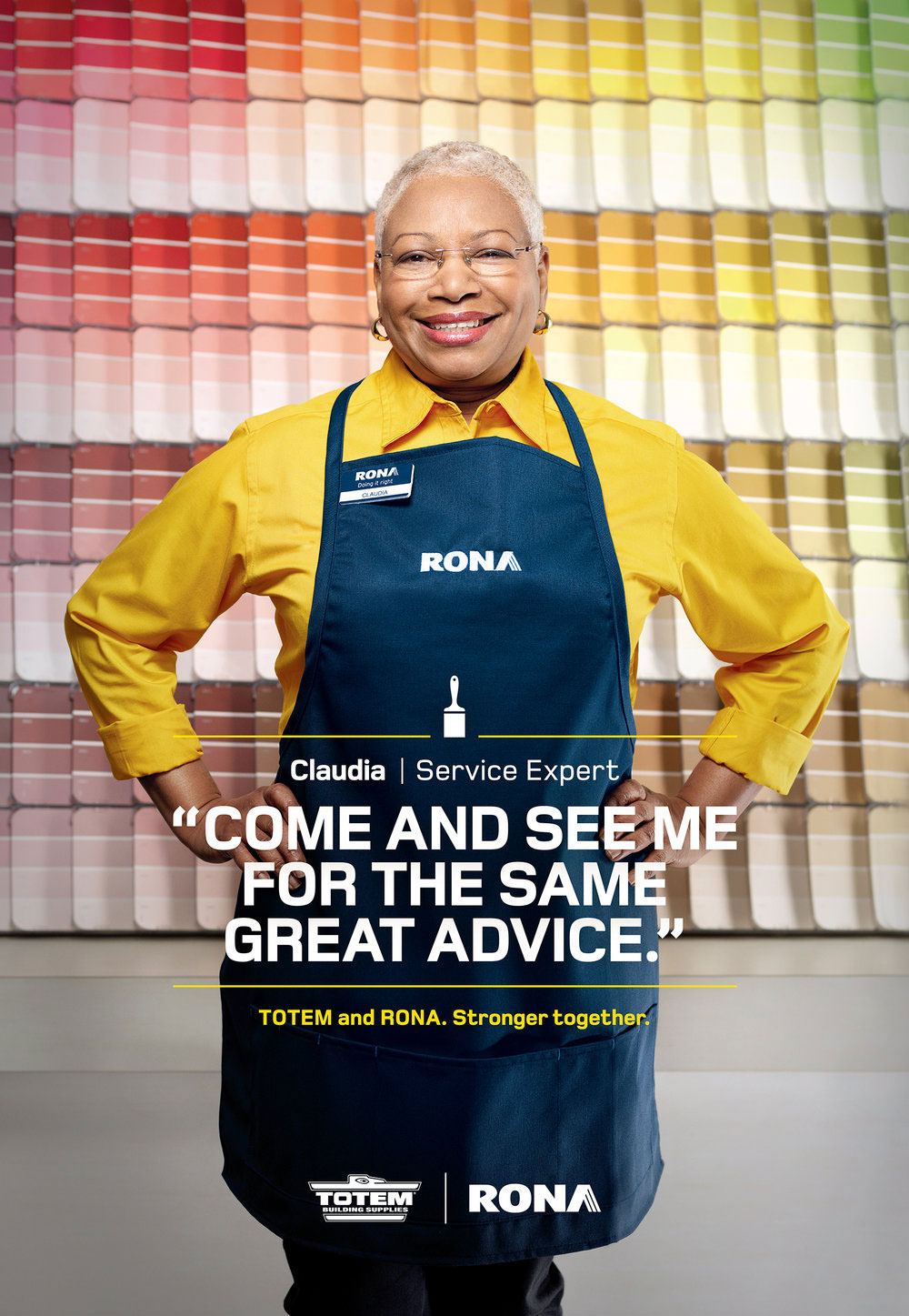
So you’re using a journalistic approach that has worked so well in advertising?
Yeah. In some cases, you have to slow down and do exactly what you’re supposed to and it looks very static and it’s supposed to look static. But I think our environmental portraits are what we’re known for. So we’re dealing with everyday people and you have to make them relaxed and that shows the photo.
Is that one of the main things you learned working with your subjects to try to get them okay about getting their photo taken? Because you work with a lot of people, like CEOs, executives, and that sort of thing and you make them look like rock stars. Personally, I think that’s a huge differentiator when I see your guys’ work. You take these executives and you make them look like a president or someone famous.
Right. I think it’s a big part of—at least a big part of what we do is just how to handle individuals in a quick amount of time. You have to meet somebody, get a read on them, talk to them. It’s important they feel as much at ease as possible, we want them to just have a conversation. We always tell the photo students, “The best way to get somebody to relax is just be slightly dumber than they are.”
And normally, that’s not a problem for me.
People are happy to talk about something that they know. And everybody knows something I don’t know. So I try to get that out of them and go, “What are those four round things? Oh, those are tires. Oh, what are they made out of? Rubber? Rubber? Wow, that’s really cool.” Just let them talk let them tell you about what they know.
“The best way to get somebody to relax is just be slightly dumber than they are.”
The thing that photographers seem to have more than anything else is a drive and the work ethic, like there’s so much gear and so much travel and so much grit that a good photographer seems to have. Do you agree with that?
I agree with that 100%. You know, the same thing when we’re talking to students or something, I’ll take out my phone and I have 75 different alarms on my phone. For example, sometimes I gotta get up at 4:00 in the morning. Sometimes I have to get up at 10:00 at night. Sometimes I gotta get up at 1:00 in the morning. You can’t be a morning person, or not be a morning person.
You get up when you have to get up and you drive where you got to drive to. We did a photo for CN Rail many, many years ago in Chicago. And they wanted a photograph of a locomotive with the city in the background. So we found this perfect spot and I think CN said, “Well, we’re going to decommission that line. So don’t take the photo there.” And we thought, “Well, that’s the best photo.” So we went there and we sat on a bridge all day long, just waiting for trains to come. It was the best shot, they didn’t use it but that’s not the point, getting the best shot is.
“You can’t be a morning person, or not be a morning person.”
Do you think better photographers are more gritty or just have more willingness to do a better job? Like, there’s no good photographer that doesn’t work extremely hard.
I think they’d be rare. There’s probably a couple who are just gifted. They can just walk into a situation and they have a reputation and they can go click and everybody’s like, “Oh, it’s beautiful. It’s beautiful. It’s beautiful.”
For the most part, you work hard. You create your own luck.
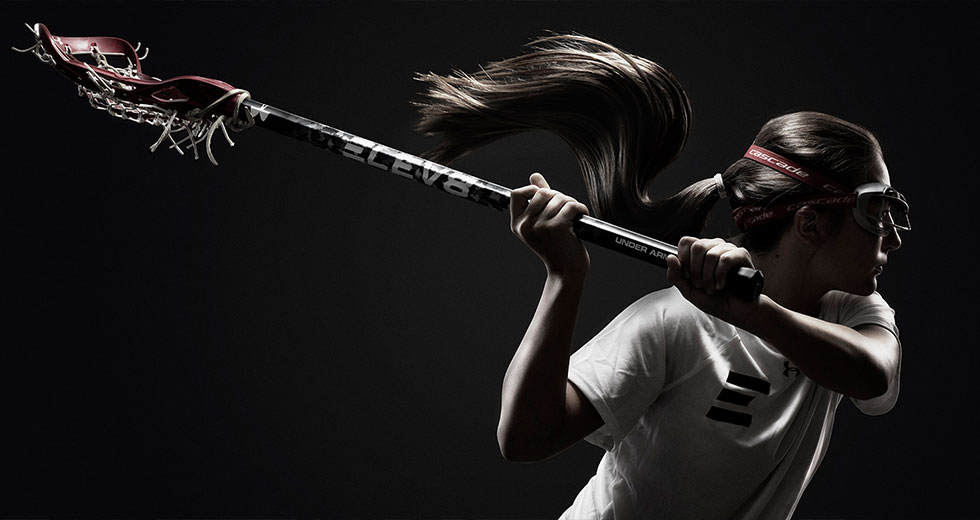
Do you remember any big first gigs that you’re surprised to get when you’re younger?
CN was one of the bigger ones. We were in Edmonton at the time, probably three or four years into our career, and we got a call from somebody. He was a photographer who did some sort of natural light work for CN Rail and CN needed a portrait of an employee and it required some photo lighting. So he passed it on to us.
I think we went to one of the machine shops or one of the places where they’re building locomotives and we got this beautiful black and white photo of this guy. We just keep working for CN from then on. Suddenly we’re going to New Orleans and we’re going to Montreal and we’re going to Vancouver and Chicago. That’s like oh my god! This is crazy.
So we did their annual report. And I can’t remember how many places we went to, but we added up the bill and thought, this is a lot of money. So whatever the bill was, say it was $20,000. We sent it to our client and said, “Well, here’s the bill and I hope you’re okay with it.” She goes, “You know what? We’re a big company. You’re a little company. Just send the bill. ” So we learned this is what it’s all about. People have money and they’re willing to pay for you to do a great job.
Another big one back in the day was Blackberry. We were shooting big sets with models and location scouting. We were in over our heads, but we did alright.
They were a great client. They were always fun to shoot for.
In the end it doesn’t matter what the budget is. It’s the same effort. So, a $10,000 photo or a $500 photo, you try to get the best shot. It’s not about the money.
How many shoots does Roth and Ramberg do a week?
When it’s flat out busy, two or three. It’s a big variety. It could be corporate stuff, industrial, advertising.
What do people think about your job that doesn’t actually apply?
People think Photoshop is easy. We always hear, “We can change the color, or we can take that out, or can you add in another person?”
We had a landscaping client and there was a jacket on top of a rock in one of the photos. They asked if we could just remove the jacket from the rock. Go in there and lift it up and take away the jacket. You have to hide the jacket by creating more rock.
I think there’s so many ways to take a photo that most people don’t understand. And that’s the hardest part to explain. There’s a difference between a wide angle lens and a telephoto lens. The closer the person is to the camera, the more expressive and fun it can be.
But we have to back up because we have to show the copy. It’s almost like one hand is tied behind your back sometimes It’s not the best photo, but it’s the best photo to fit the layout.
Oh, and banner ads are the devil.
You mentioned Photoshop work. Where do you guys spend a lot of time in post-production?
We got a guy. It’s not worth our time to sit there in front of the computer, we would take too long. Which I think makes our work better because as long as we understand the concept, we can photograph what he needs to add people to a scene or take them out of a scene or whatever the case may be.
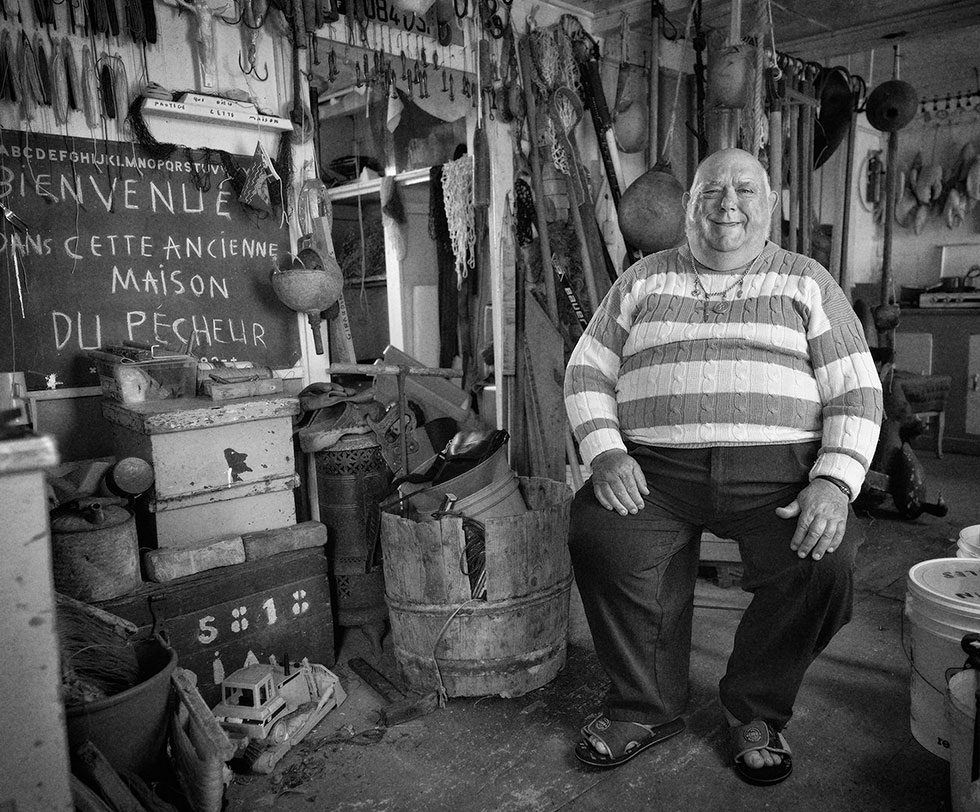
What’s the team look like?
It’s Michelle, me, and our Photoshop guy named Geoff.
What kind of camera do you shoot on?
We’ve got a Hasselblad Medium Format digital camera. It’s a 60 megapixel. We’ve also been shooting a lot lately with a Sony, which is a cool little mirrorless camera and we have a new wide angle for it with a very, very small aperture. -1.2 I think.
So what that means is we can shoot a wide angle shot, but the person would be the only thing in focus., With a normal wide angle usually everything’s in focus. So we’ve been playing with that which is kind of fun. So we have two main systems. The Hasselblads which are good for putting on a tripod and Sony is good for run and gun, more journalistic.
Cool. Do you guys do any film work?
No, we sort of stayed away from video.
If people are better at it, why are we doing it? Not to condemn what’s out there, but we don’t want to make any of the not-so-good stuff that I see. So I guess, because we’re not masters of it. Why do it if you’re not great at it?
Other people are great at it. So let them do that. It’s like me designing a logo. I could probably design a logo, but there are other people better at it than me. So I’m not going to design the logo.
What were the last two or three shots that you went out and did?
I’ve done some product stuff which is because we’re in quarantine and can’t shoot people.. That was kind of fun because we’re not known for our product stuff, but we certainly have the ability to do it.
Has anyone ever asked you to do something you couldn’t do? Or refused to do?
We generally turn down architecture because it’s not interesting to us. Technically, we could do it, but it’s just not fun. Same with weddings. I don’t want to do people’s photos on their porch. You know, it’s just not my thing.
I don’t think we’ve turned down anything other than… In the in the beginning of our career, a sex shop approached us and said they wanted some erotic black and white photos. We thought this could be really cool and artistic and kind of fun. In the end, because we were just starting out, we said no. I think now that we have been around and are established and have a good reputation we might just say yes if they were to ask today. Reputation is important. So we came up with the line that if you can’t show your mother, then you shouldn’t take the photo.
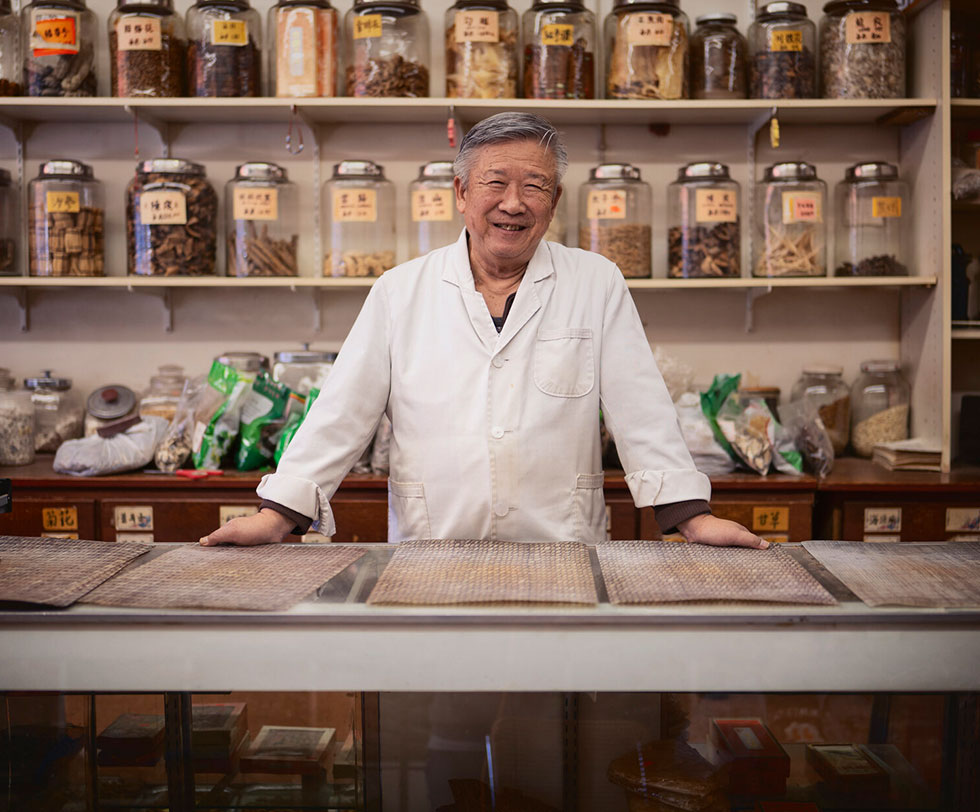
That’s an awesome guideline.
You can draw your line in the sand and say “I’m not going to work for an oil company.” And that’s fine, everybody has their own line. But my line is that, I’m happy to take the work and help them out but also use my skills to help a charity or organization that has no money.
So advertising can be a dirty word when you’re selling people shit they don’t need. So in order to balance it out, you have to do some good with your skill. So that’s the approach I’ve been keeping.
What kind of Vancouver companies do you work with?
We’ve done stuff with Rethink, Cosette, Edelman, Here be Monsters. Some of the bigger agencies for sure.
When I first met you, you were sort of like The Agency’s Photographers. Does that still hold?
Yeah, but it’s kind of evolved. I mean coming to Vancouver from Calgary was a bit harder because all the agencies have their photographers. So you’re kind of chipping away at the bottom and you’re slowly trying to get on everyone’s radar.
We’ve weirdly been doing a lot of corporate work. So it’s interesting. Photos of lawyers and executives mainly. There’s a local company here who does strictly lawyer websites. So we’ve shot here but also travelled down to the States and Toronto and shot for them.
We’ve got probably 25 corporate clients that just continually need photos of new people coming in.
I guess lawyers need pictures of all their lawyers. So anytime someone new comes on?
Exactly! Business wise it creates a steady income compared to the advertising world so it’s been a nice bonus. The big advertising jobs are creative and fun to do, but it’s nice to have some balance. Not all our eggs in one basket.
What corporate clients have you shot recently?
A few recent ones were for ITA (International training Association), four or five law firms and a company called Long View Systems.
What do you want to talk about now that I’ve asked my questions?
I don’t know. Well, I’ve written a few blogs lately, so you have to go check them out on our thing.
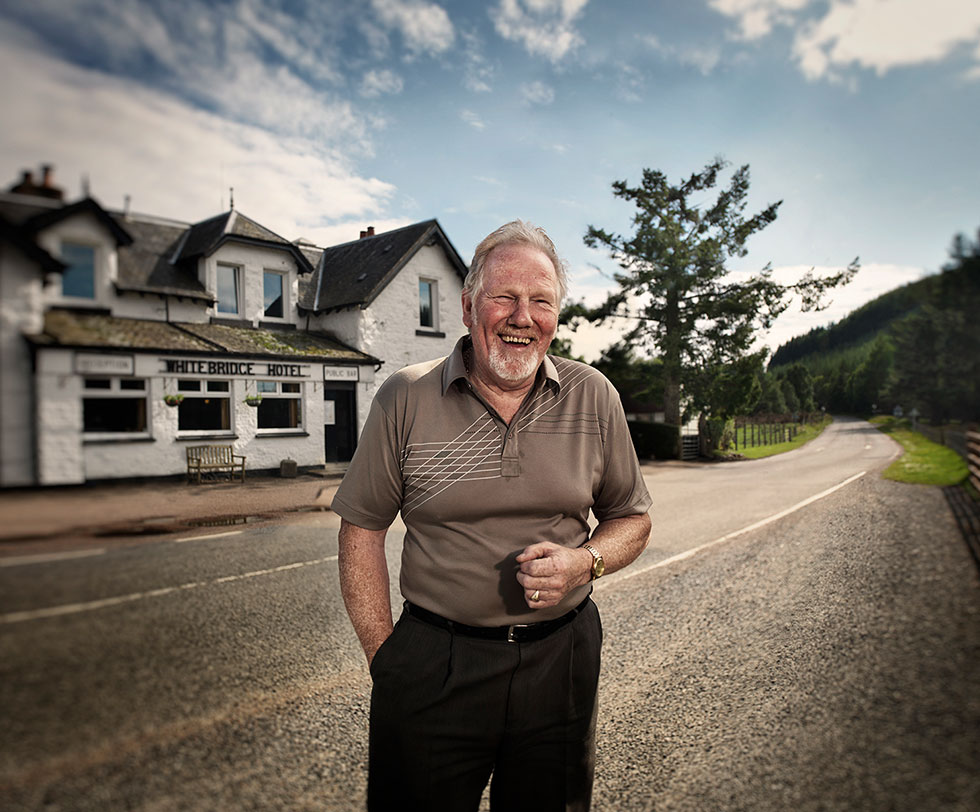
It’s just about photography. So I’ve been trying to write and stay sane during this whole time. But it’s funny because I wrote one about how the advertising world could work better with photographers and give us more information.
We just recently got a job where they just did everything wrong that I listed in the blog. They sent me the concept and I matched their concept, but they changed it. And it just kept going from here to here to here to here. It was amazing. It was funny.
The weirdest thing to me after all these years is if you’re going to have a billboard with a photo on it, and you’re in a room discussing with your client, why wouldn’t you want the photographer in that room? That photographer could add a lot of value. It’s weird that the visual that’s driving everything, you don’t have the person in the room who’s creating the visual.
So you’re so photographers, even with decades of super high end work under your belt. You’re still a service provider that comes at the end of the process. You’re not brought into concept.
Yeah, we execute the idea. Sometimes with a little more play in it. To be honest, there’s sometimes more creativity with corporate clients because they might tell you to go wild. So that’s kind of fun.
The agency stuff is very “I need a photo of this”, which makes sense. They’ve sold their client on a concept. You’ve got to execute the concept. You can play after the fact, but you’ve still got to match the concept. But it’s sort of interesting to me that nobody ever bothered to go, “Why don’t you come in and, you know, spit ball with us in the beginning?” Because maybe I got a better idea or maybe I got a lighting technique that you might like.
I always thought it’d be fun to create my own agency with a writer and creative director. Like, why wouldn’t I be a part of that? That’d be cool.
Aren’t there any photographers with agencies?
I don’t think so.
Writers create agencies, designers create agencies, creative directors and media planners, everyone else in an agency position.
No. You know Jeff McLean. He’s just a creative guy. I could work with him. And I have many times. Usually when I collaborate with him our ideas just get better and better. It’s a perfect example of throwing back and forth. Not that I come up with the creative idea, but it’s a process that we work on together. It usually creates a better thing, right? So I always thought, you know what, why not?
It’s so ridiculous that that doesn’t happen.
Considering the world’s very visual, why aren’t the visual people running the show? I mean, to be honest, I don’t have the clever ideas those guys do. Some of them might have better creative ideas, but I’ve also seen some bad concepts come our way that we have to try to save and there’s just no saving a train that’s going down the wrong track. If it’s a shitty idea, man. And how do I save that? There’s no saving that idea.
Well, you can pull it back quite a bit and add a lot to it with a nice photo.
Yeah, put a bow on it. Lipstick on the pig, man.
If I think it’s a bad idea, it’s probably a really bad idea. Because I’m like the master of puns.
What’s the top no, no, when working with photographers? What is the number one thing that people should know not to do that ends up in a bad end product?
I’m not sure if there is a no no, but maybe listen a little more to our input.
We did a shot for a mall many years ago and they wanted some sort of “the mall has everything”. They wanted us to photograph Kleenex boxes on somebody’s feet as if they were shoes. I said, “I can’t see this working. I just can’t see it.” So, we tried to talk them out of it, but they didn’t go for it. We ended up shooting the best shot we could. Let’s just say it’s not in our portfolio.
If I think it’s a bad idea, it’s probably a really bad idea. Because I’m the master of puns and I like hokey dad jokes sometimes.
“With creative people, if you let them do their job they will do a great job.”
What was the idea if someone’s putting Kleenex boxes on their feet? What’s the pun?
I think it was like “the mall has everything that you need.” So even if you need shoes, we got Kleenex. I don’t know.
I still don’t get it.
I don’t either. And then another one was a colander on a model’s head like a hat.
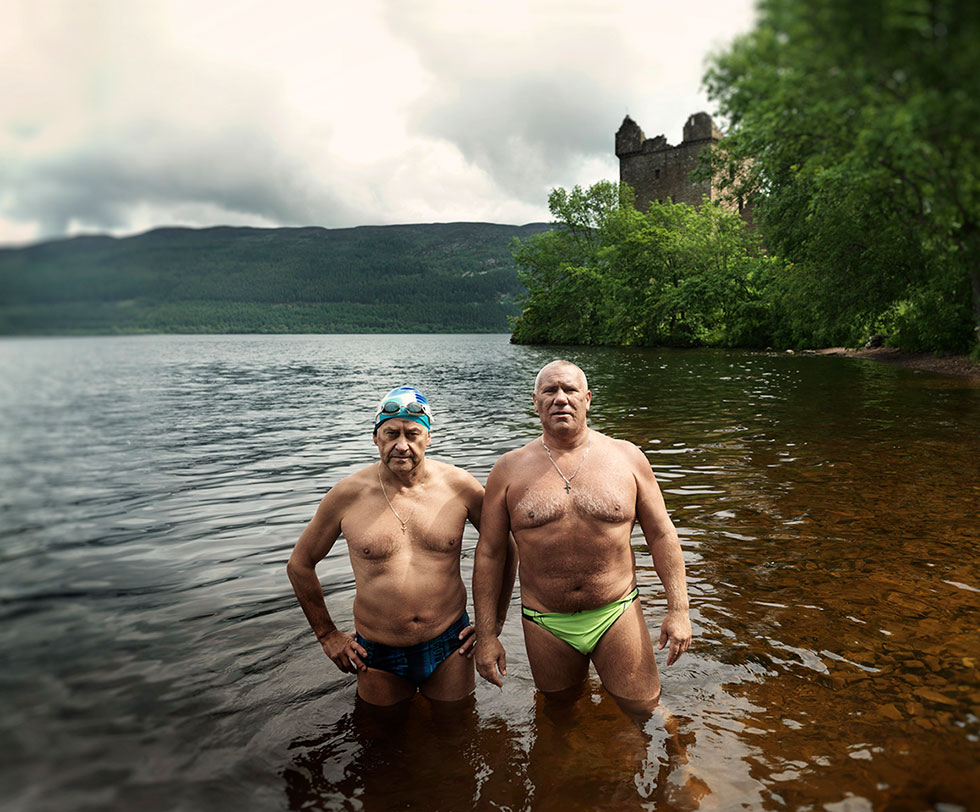
The number one mistake people can make is to come up with bad ideas?
With creative people, if you let them do their job they will do a great job. Somebody somewhere said, “Hey, my wife said this or my boss said this or can you incorporate Kleenex boxes in there because they’re giving us money?” As you know, it just waters down the creativity when more people pile in there. The more the more opinions you get, the worse it’s going to be.
That makes a ton of sense. What sticks out about those blog posts that you did? What was the main takeaway that people get when they read them?
I’ve been around long enough and I’m just spewing out stuff just like we’re talking about now. Here’s what bugs me. Here’s what I like. Here’s what influences me. I’m hoping that because I’ve been around long enough it’s fairly legitimate? It’s not the be all, end all, but…
You’re extremely legitimate. How many shoots have you done in your career?
I don’t know. I’ve seen a lot. So I’ve seen a lot and I’ve dealt with a bunch of creative people. So I think my opinion is valid.
How many shoots if you’re in a ballpark?
Oh, Jesus! Well, I would say for sure over ten thousand photos.
You must have been in some wild situations.
Oh god, yeah. I remember shooting for a client and we’re on an industrial site. And we were at the top of this machine that grinds up coal. You pour the coal and it goes through this machine anyway I’m pretty sure there wasn’t a safety person with me.
So in order to get the shot, I popped over this metal area. And I’m in the bin. Had I slipped, I would well be dead. I don’t know how far that thing went down. The blade wasn’t working, but I think it was probably a decent drop. But nobody said tie off. Nobody said anything, so I held onto the side with one hand and camera in the other.. So anyway, I didn’t kill myself.
Well, congratulations. And of course you would risk your life to get a photo for an industrial client.
Absolutely! Safety third is our motto even though we don’t really believe it. Get the shot, have fun, and be safe.
You’ve had a business partner for over 20 years, right?
Over 25 years, so ‘93 maybe? I don’t know if our anniversary is coming up. Michelle put it on the calendar because she’s the smart one.
“One of us has to be the clown. I’m the monkey and she’s the guy winding up the monkey or whatever. So we have to work together, but we have to make them relaxed. It’s like a comedy show is what it is.”
Leads me to my next question. How do you keep a business partner for around 30 years?
I think a number of things. We’re different people. So it’s a male-female relationship, which I think works in those situations where the person is more comfortable with a male or female. For example the male executive might prefer a female applying powder and adjusting their clothing, also a female executive may not prefer a male touching their clothing to make the photo perfect. Whether it’s gender or not, it doesn’t really matter. But we think differently. She’s more organized. I’m more loosey-goosey.
In the beginning, we would collaborate together on a photo and the photo would turn out mediocre. So we realized that one of us has to take charge and the other one has to drop back because we can’t water down our ideas.
So when we go to a shoot we see how the person responds to one of us, then that person takes the lead and the other person becomes the assistant/art director. At times it gets hard because I think I’ve got a great idea and my idea is better than your idea. And Michelle’s like, I got an idea. My idea is better than your idea.
And sometimes it causes friction, but we have to realize it’s the same goal. We want to create a great photo. So it’s not like somebody undermining somebody. It’s like, we want to create—we have the same thought pattern.
We both work hard, which is important. We both want to do great work. And we both realize we have faults. My strength is her weaknesses. Her weakness is my strength. So that works. Sometimes, she wants to kill me, I’m sure, but you know, could be worse.
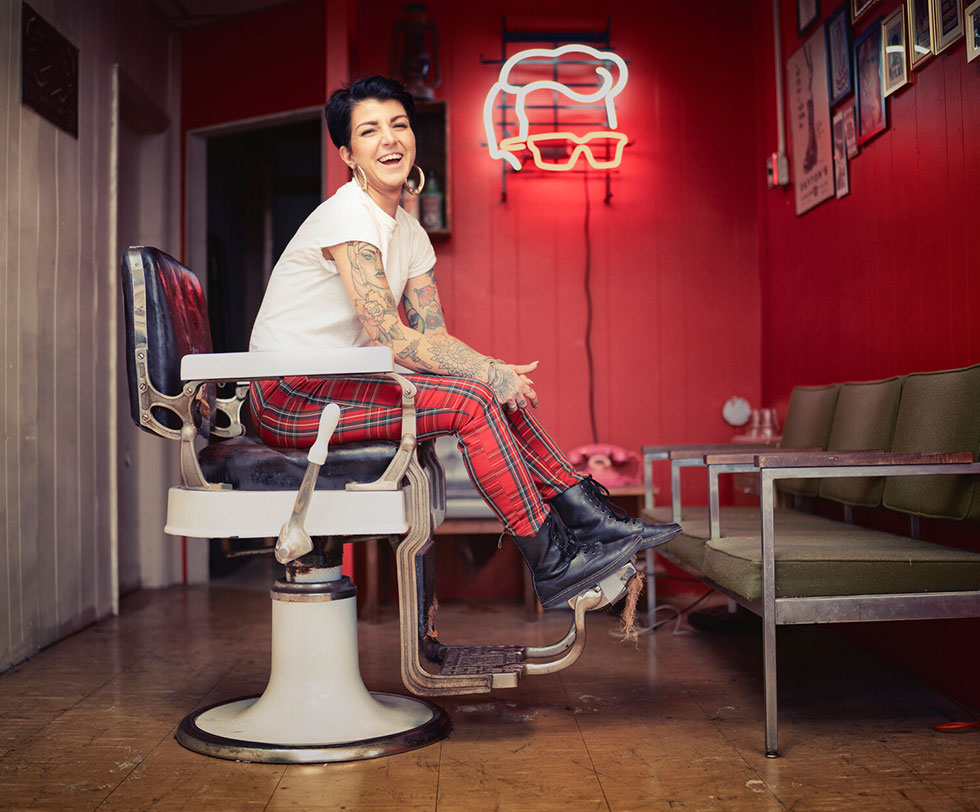
So a different personality type with the same goal in mind?
Yes.
Probably the best case scenario.
I think so. Being with a partner just adds that extra stuff that I don’t have.
She would say the same but be harder on me. Me joking around, goofing around, relaxing people, is important. It’s not like I’m lazy. There’s a method to my madness.
Well, that’s a team. Right? Two people that’s adding something.
Yeah. And I respect what she does. I’m assuming she respects what I do. It works. We just make it fit. Looks like a comedy team, right? Like you said way back when, we have to make somebody relaxed. Cool. We’ve got five minutes to make them relaxed. One of us has to be the clown. I’m the monkey and she’s the guy winding up the monkey or whatever. So we have to work together, but we have to make them relaxed. It’s like a comedy show is what it is.
So the ability to make people relaxed, is that one of the most important parts of photography?
An important part of our photography, for sure. Because we’re not dealing with models generally speaking, we’re dealing with everyday people. The CEO has to relax. The baker, the butcher, whoever they are, the farmer, the oil worker—they all have to be relaxed. Otherwise, it shows. It’s a big, big part of our photography, for sure.
When you hire talents and models, no problem. They’re great. They’re professionals. That’s easy. I don’t even have to talk to them. I just push the button. I don’t even have to look. I just turn away and push the button. They’re so good.
Is that one of the big recommendations when you’re talking to kids at school?
We used to have a little spiel, but now, what we do is we go to the room and we go, “Okay, everybody’s got to ask a question.” So everybody has to ask one question. There’s 25 people in a class and it’s the same questions class after class. How do you work as a partnership? How does this work? How do you do this? How do you quote?
But I think the biggest thing is making people relaxed, number one. It’s the number one thing from our point of view.
You guys have remained quite successful despite everyone having the ability to purchase high-end equipment.
Yeah. And that equipment will make it easier for sure. It’s less technical than it ever was. People don’t necessarily need to light anymore. I mean photographers brag about being natural light photographers which I think is funny. That means you don’t know anything about lighting other than put them outside.
I wouldn’t call that a photographer, but, okay. Good for them. Good for the Instagrammers for being good-looking and taking pictures of themselves in bikinis.

If it works, it works.
If it works, it works. I would too if I look good in a bikini.
But it comes back to how there used to be a whole industry of shooting cars. Well, that’s gone. There’s the whole scenic photography. Anybody can do scenic photography now. You can put a self-timer. You’re standing on a cliff with a big background. You see that everywhere. It’s everywhere. Anybody can do it. But people can’t shoot people and get them to act natural.
You need to shoot people all the time. It has to be the President or the nurse or the doctor or the iron worker. You can’t just throw and model in there. Or you can’t CGI them. B, you got to know your light. C, you got to make them relaxed. We’re trying to check off those boxes to go before photography swallows us up and there’s no need for us anymore. That’s the hill we are going to stand on.
“You walk around the streets and you see photography and you see the light and the straightened frames on the wall. It’s like a disease. It’s never going to go away.”
Well, you’re talking about a lot of technical, human characteristics—I don’t think you’re going to be able to replace those human talents.
Let’s hope so.
What’s next?
I’m trying to think of life after advertising photography, like what I wrote about today. It’s about fine arts photography. That’d be cool.
I’m never going to give up photography because I can’t. You walk around the streets and you see photography and you see the light and the crooked frames on the wall. It’s like a disease. It’s never going to go away. I’ll do it until I die. But I’m not going to be in the advertising world, so I think fine arts will be cool.
I’m looking at some photographers that I like and see what they are doing. What I’ve realized is they have to turn off their advertising brain because the advertising brain is executing somebody else’s idea. It’s like, now you have to come up with the idea. That’s not easy.
If you could shoot anything in the world, what would I shoot? I don’t know. And could I shoot it without thinking about copy or vertical or horizontal and whether the client will like it? I got to brainwash and get rid of all that stuff. That’s my next step.
Do you walk into a record store and think, “Wow, this could make a nice picture.” Do you think in pictures?
Yeah.
When you see something, you don’t live life like the rest of us, where it goes into our brains and kind of gets absorbed. It stops in a place in your brain where you think, “This is a nice photo.” Like everywhere, Christmas morning, 3:00AM…
A photographer is just constantly aware of the world around them. Going for walks in the neighborhood where you just see the beauty that’s in your neighborhood. Or the back alley with the shadows and the cardboard boxes and the flowers in the yard. If I look around I see photos. It’s always been that way.
Do you think you’ve lived a better life seeing things in photos because you can appreciate more?
I think it’s a curse, but as far as jobs goes, it’s a fucking awesome job. I could die tomorrow going, “Dang, I had a lot of fun.” I wouldn’t trade it for anything.
What do you mean it’s a curse?
I can’t appreciate the sunrise. It’s just like, “Oh, fuck, I wish I had a camera.”
You can find Dale Roth’s company Roth and Ramberg on:


